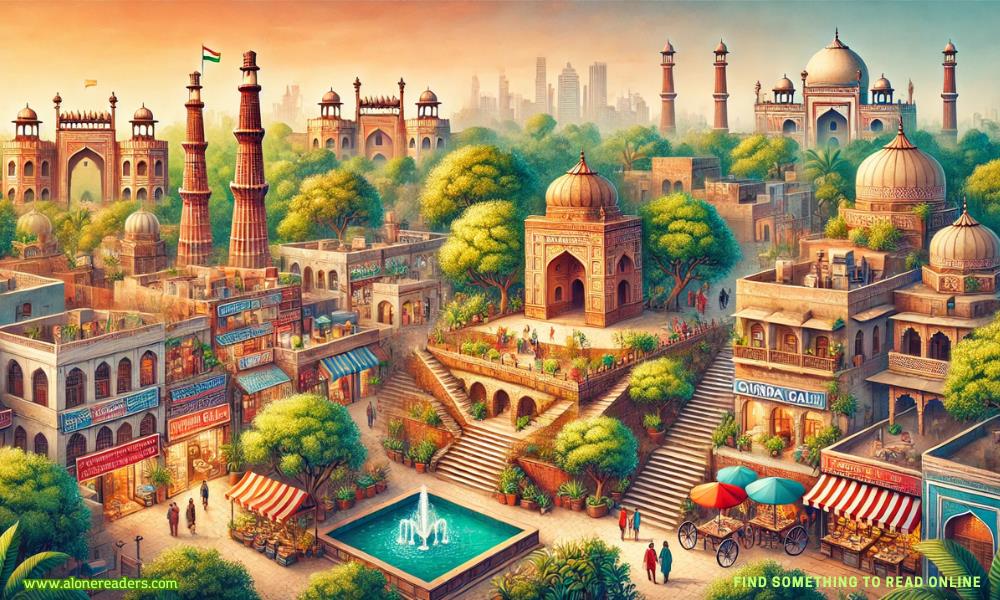
Delhi, India’s capital city, is a place where the past and the present merge into a vibrant tapestry of life. Most travelers know about the Red Fort, India Gate, Qutub Minar, and Chandni Chowk—but Delhi hides many lesser-known treasures just waiting to be explored. This is not a blog from a travel influencer—it’s a local’s heartfelt guide to the places that truly reflect the spirit of Delhi. In this article, you’ll find hidden nooks, quiet lanes, secret gardens, budget tips, and authentic eats you won’t find in most travel brochures.
Why Visit:
Tucked between Connaught Place and KG Marg, Agrasen Ki Baoli is a 60-meter long and 15-meter wide historical stepwell that feels like a time capsule. Despite being close to Delhi’s commercial hub, it remains serene and hauntingly beautiful.
Attractions & Experience:
Its symmetrical stone steps, arched niches, and eerie silence make it a photographer’s paradise. Locals believe the place is haunted, which adds to its allure.
Getting There:
Nearest Metro Station: Barakhamba Road (Blue Line), 10-minute walk
Entry Fee: Free
Recommended Time to Spend: 30-45 minutes
Travel Tip:
Best to visit during early morning or late afternoon to avoid heat and enjoy quietness.
Why Visit:
This is Delhi’s “green lung,” spread over 780 acres near Vasant Kunj and Mehrauli. A hidden forest trail, Sanjay Van is a paradise for bird watchers, runners, and peace-seekers.
Attractions & Experience:
You’ll see peacocks, butterflies, and rare birds. Scattered ruins from the Sultanate era add an ancient charm. Perfect for nature lovers and early risers.
Getting There:
Nearest Metro: Qutub Minar (Yellow Line), then a 10-minute auto ride
Entry Fee: Free
Best Time to Visit: Morning between 6:00 AM and 9:00 AM
Safety Tip:
Avoid going alone during dark hours. Carry water, wear comfortable shoes, and beware of monkeys.
Why Visit:
Built in the 14th century by Ghiyas-ud-din Tughlaq, this fort is massive and mostly in ruins, but its desolation and silence are precisely what make it special.
Attractions & Experience:
You'll find sprawling walls, secret tunnels, and panoramic city views. Very few tourists visit, making it perfect for peaceful exploration.
Getting There:
Nearest Metro: Tughlaqabad (Violet Line), then auto-rickshaw (10 minutes)
Entry Fee: ₹25 for Indians, ₹200 for foreigners
Time Needed: 1.5 to 2 hours
Caution:
Avoid climbing broken structures and wear shoes with grip. Carry snacks and water as there are no shops inside.
Why Visit:
Located near North Campus, this Tibetan colony is known for its narrow lanes filled with cafés, bookshops, and handicrafts.
Attractions & Experience:
Try momos, thukpa, and laphing (spicy noodle snack), shop for Tibetan jewelry, and enjoy the peaceful ambiance of the monastery.
Getting There:
Nearest Metro: Vidhan Sabha (Yellow Line), auto-rickshaw for ₹30-50
Entry Fee: None
Food Cost: ₹300–₹500 for two
Stay Option:
There are budget guesthouses and homestays starting from ₹800 per night.
Local Advice:
Bring cash—many places don’t accept cards. This is a great place to relax with a book or have a quiet meal.
Why Visit:
This restored 200-year-old haveli in Chandni Chowk is now a boutique hotel and fine-dining destination. It's where Mughal history meets modern indulgence.
Attractions & Experience:
Relish traditional Indian cuisine in a rooftop restaurant overlooking Jama Masjid. Classical dance shows and kite flying are offered during weekends.
Getting There:
Nearest Metro: Jama Masjid (Violet Line)
Meal Cost: ₹1,500–₹2,000 per person
Accommodation: ₹10,000+ per night
Worth It?
Yes—for a special night out or cultural experience.
Why Visit:
Often overshadowed by Qutub Minar next door, this park spans over 200 acres and is dotted with medieval monuments, tombs, and stepwells.
Attractions & Experience:
Explore Rajon Ki Baoli, Jamali Kamali Mosque, and Balban’s Tomb. You’ll rarely find crowds here, which allows you to soak in the rich history at your own pace.
Getting There:
Nearest Metro: Qutub Minar (Yellow Line), 15-minute walk
Entry Fee: Free
Ideal Visit Time: Morning or late afternoon
Caution:
The area is large, so wear comfortable shoes and bring water. Not very well-lit in the evenings.
Budget Hotels (₹1,000–₹2,500/night):
Mid-Range (₹3,000–₹6,000/night):
Luxury (₹8,000+ per night):
Local Tip:
Book early, especially during October–March, which is peak tourist season.
Street Eats:
Café Culture (Mid-Range):
Estimated Daily Food Budget:
| Category | Budget Traveler | Mid-Range Traveler | Luxury Traveler |
|---|---|---|---|
| Stay | ₹1,000–₹2,000 | ₹3,000–₹6,000 | ₹8,000+ |
| Food | ₹300–₹500 | ₹700–₹1,200 | ₹2,000+ |
| Transport | ₹100–₹300 | ₹300–₹600 | ₹800+ |
| Entry Fees | ₹0–₹100 | ₹0–₹300 | ₹0–₹500 |
| Total | ₹1,500–₹2,900 | ₹4,000–₹8,100 | ₹10,800+ |
Final Thoughts
Delhi is more than its monuments. It's a living, breathing experience. Through these hidden gems, you’ll discover the quieter, more authentic side of India’s capital—its soul, its flavors, its stories. Whether you’re a first-timer or a returning visitor, step off the beaten path and let Delhi surprise you. It's a city that always has something new waiting just around the corner.